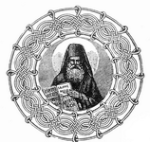You can help expand this article with text translated from the corresponding article in Serbian. (December 2013) Click for important translation instructions.
|
 | |
| Formation | 1886 |
|---|---|
| Type | non-governmental cultural association |
| Purpose | Protecting Serb people in the Ottoman Empire, in Old Serbia and Macedonia, and in Austro-Hungarian Bosnia and Herzegovina |
| Location |
|
| Key people | |
| Affiliations | Serbian Chetnik Organization (est. 1902) |
The Society of Saint Sava or Saint Sava Society (Serbian: Друштво „Свети Сава“/Društvo „Sveti Sava“) was a Serbian non-governmental association with the aim of maintaining and protecting the Serb people in the Ottoman Empire, in Old Serbia and Macedonia, and in Austro-Hungarian Bosnia and Herzegovina, founded in 1886 in Belgrade, the capital of the Kingdom of Serbia. It was active, with a brief pause during the First World War, until the Invasion of Yugoslavia (1941).
History
Work in Macedonia
| This article may be unbalanced toward certain viewpoints. Please improve the article by adding information on neglected viewpoints, or discuss the issue on the talk page. (April 2015) |
The society worked for dissemination of Serbian propaganda in the region of Macedonia and Old Serbia. The Society offered paid scholarships to those who called themselves Serbo-Macedonians. The society organized in Serbia specialized schools for children of Macedonia and Old Serbia and developed a propaganda among the Macedonians working in Serbia. Only three years later, its executive body became part of the Ministry of Foreign Affairs of Serbia. Its propaganda was so strong that after a sequence of student riots in the Bulgarian Men's High School of Thessaloniki, a group of 34 students accepted the proposal of the Serbian emissaries to go and study free of cost to Belgrade. They soon became aware of the obvious reasons behind its program, when they were forbidden to possess Bulgarian literature. Subsequently, nearly the whole group left Belgrade to continue its education in Bulgaria. Among that group were Dame Gruev, Petar Pop Arsov, Krste Misirkov, Kosta Shahov, etc. As a result, one of the main reasons for the establishment of the Internal Macedonian Revolutionary Organization (IMRO) by Dame Gruev and Petar Pop Arsov in 1893 was to stop the spread of Serbian propaganda into Macedonia. Later the society's fellows constituted the backbone of the Serbian Chetnik Organization. Bulgarian contemporaries used the term "Serbomans" for Serbs in Macedonia.
Members
- Founders
- Svetomir Nikolajević, founder
- Kosta Šumenković, founder
- Stevan Vladislav Kaćanski, founder
- Milan Đ. Milićević, founder
- Ljubomir Kovačević, founder
- Panta Srećković, founder
- Miloš Milojević, founder
- Milojko Veselinović, founder
- Firmilijan Drazic, founder
- Others
- Temko Popović
- Jovan Hadži-Vasiljević, secretary, editor of Brastvo
- Spasoje Hadži Popović
- Damjan Grujević
- Petar Poparsić
Legacy
In 1994, an association with the same name was founded by 80 university professors.
References
- Who Are the Macedonians? Hugh Poulton, C. Hurst & Co. Publishers, 2000, ISBN 1850655340, p. 224
- Антони Гиза, Балканските държави и македонския въпрос, гл. 9, Македонски Научен Институт София, 2001.
- The Balkan Wars in the Eyes of the Warring Parties: Perceptions and Interpretations, Igor Despot, iUniverse, 2012, ISBN 1475947038, p. 14.
Sources
- Народна енциклопедија српско-хрватско-словеначка, Београд 1929, књига 1, 575
External links
Categories:- Serbian cultural organizations
- Serbian irredentism
- Kingdom of Serbia
- Ottoman Serbia
- Ottoman period in the history of North Macedonia
- 19th century in Serbia
- 1886 establishments in Serbia
- Serbian nationalism
- Kosovo Serbs
- Serbs of North Macedonia
- Kosovo vilayet
- Manastir vilayet
- Salonica vilayet
- Yugoslav Macedonia
- Anti-Bulgarian sentiment
- Serb organizations
- Ethnic organizations based in Yugoslavia
- Defunct organizations based in Serbia
- Serbian nationalism in North Macedonia